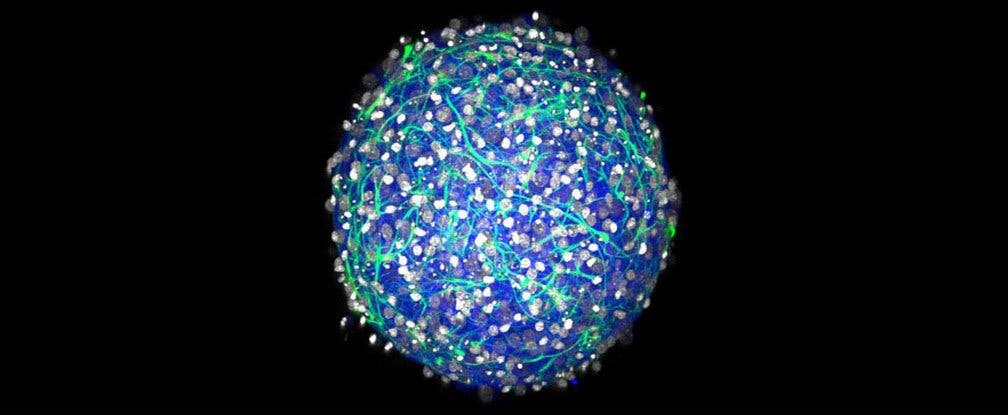Scientists have developed devices that move us one step closer towards eliminating the need for animal testing. These working miniature artificial brains would be ideal for testing drugs research, neural tissue transplants, or experiments with stem cells.

The results were published in a new paper by researchers from Brown University in the US; these little balls aren’t actually cognitive, but they do produce electrical signals and form their own neural connections (synapses) which is basically what you want for testing. The authors themselves are quite confident in what they’ve accomplished:
“We think of this as a way to have a better in vitro [lab] model that can maybe reduce animal use,” said co-lead author Molly Boutin. “A lot of the work that’s done right now is in two-dimensional culture, but this is an alternative that is much more relevant to the in vivo [living] scenario.”
The “brains” are pretty simply to make – with one small sample of living tissue from a single rodent they can make thousands of them. The way it works is they isolate and concentrate the brain cells they want through centrifuge and then they grow the samples in a in medium in an agarose spherical mold. The resulting molds, about a third of a millimeter in diameter, are not the first (nor are they the most complex) alternative proposed to replace animal testing. The thing is, they’re by far the cheapest and easiest to make. Earlier this year, Harvard also proposed “organs on a chip“, which could, in time, complement other areas of animal testing.
“The materials are easy to get and the mini-brains are simple to make,” said co-lead author Yu-Ting Dingle, who earned her Ph.D. at Brown in May 2015. She compared them to retail 3-D printers which have proliferated in recent years, bringing that once-rare technology to more of a mass market. “We could allow all kinds of labs to do this research.”
So, for all practicalities, this could actually work – especially as with all the equipment being available, the price is only $0.25. Here’s what properties these brains can fill:
- Diverse cell types: the cultures contain both inhibitory and excitatory neurons, supporting various neural support cells
- Electrically active: the neurons fire and spike and form synaptic connections, producing complex networks
- 3-D: this is actually a major advantage. Cells actually connect and communicate within a realistic geometry like a real brain, rather than merely across a flat plane as in a 2-D culture
- Natural density: The balls have a density of a few hundred thousand cells per cubic millimeter, which is similar to a natural rodent brain
- Physical structure: The cells in the mini-brain produce their own extracellular matrix, not relying on foreign materials such as scaffolds of collagen, which makes it cheaper
- Longevity: In testing, cultured tissues live for at least a month.
Was this helpful?



